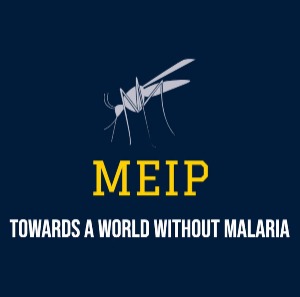Students develop digital tool to help the fight against malaria

Reiden Magdaleno
Bachelor’s Student, Public Health Sciences
Despite ongoing global health challenges related to COVID-19, the emergence of new variants of SARS-CoV-2 and concerns about future pandemics, malaria, one of the world's oldest diseases, remains a significant public health problem worldwide. According to the most recent World Health Organization (WHO) World malaria report, there were 247 million cases of malaria in 2021 and 245 million in 2020, with an estimated 619,000 and 625,000 deaths, respectively. In 2020, there were about 14 million more cases of malaria and an additional 69,000 deaths from the disease compared to the previous year, with about two-thirds of these deaths (47,000) linked to COVID-related disruptions.
Despite efforts to reduce the incidence and mortality of malaria, progress has been slow since 2015 and the 2020 milestones set by the Global Technical Strategy for Malaria 2016-2030 (GTS)—to reduce malaria case incidence and mortality rates by at least 40%—were not met. It is also important to note that the WHO African Region bears a disproportionately high share of global malaria burden, as it accounts for 96% of the world's annual malaria cases and deaths, with more than 479,000 child deaths per year.
Digital data visualization tool
 A group of University of Michigan School of Public Health students in Associate Professor
of Epidemiology Jon Zelner's PUBHLTH 405 course developed the Malaria Eradication Interactive Project (MEIP), an informational website to aid in the global eradication of malaria using digital
technology.
A group of University of Michigan School of Public Health students in Associate Professor
of Epidemiology Jon Zelner's PUBHLTH 405 course developed the Malaria Eradication Interactive Project (MEIP), an informational website to aid in the global eradication of malaria using digital
technology.
This public health tool provides an overview of malaria, its etiologic agent, symptoms, transmission and prevalent regions, also the common ways to prevent, control, and treat it. It also features interactive maps displaying the global distribution of malaria and its relationship to GDP per capita as well as information on successful malaria prevention and control strategies implemented by countries that have been certified as malaria-free by the WHO from 2000 to 2021.
The ultimate goal of this project is to aid in the elimination of malaria by making existing data on the disease more accessible, presented in a visual format that is easier to understand and draw insights from, and to be used by a wide range of audiences, including public health officials, researchers, policymakers and the general public, contributing to the global effort to eradicate malaria.
MEIP was created by University of Michigan School of Public Health students Reiden Magdaleno, Farwa Akbari, Jacob Liu, Ariel Arbiv, and Tayebah Chowdhury.
About the Author
 Reiden Magdaleno is an undergraduate student at the University of Michigan studying
Public Health Sciences. He is interested in the spatiotemporal dynamics and risk mechanisms
of infectious diseases, specifically vector-borne, to better understand the science
behind the spread and control of these diseases. He hopes to contribute to more effective
methods for disease prevention and vector control strategies through research, with
a focus on low- and middle-income countries that are disproportionately affected by
these diseases.
Reiden Magdaleno is an undergraduate student at the University of Michigan studying
Public Health Sciences. He is interested in the spatiotemporal dynamics and risk mechanisms
of infectious diseases, specifically vector-borne, to better understand the science
behind the spread and control of these diseases. He hopes to contribute to more effective
methods for disease prevention and vector control strategies through research, with
a focus on low- and middle-income countries that are disproportionately affected by
these diseases.
